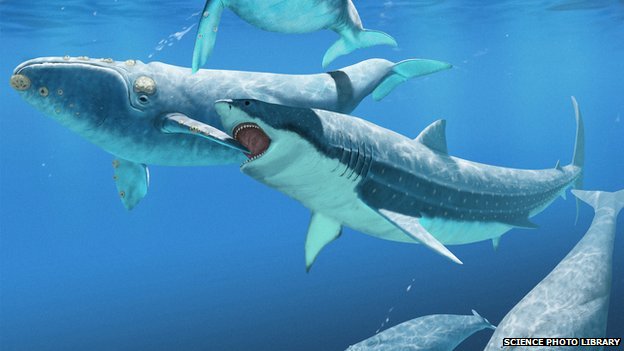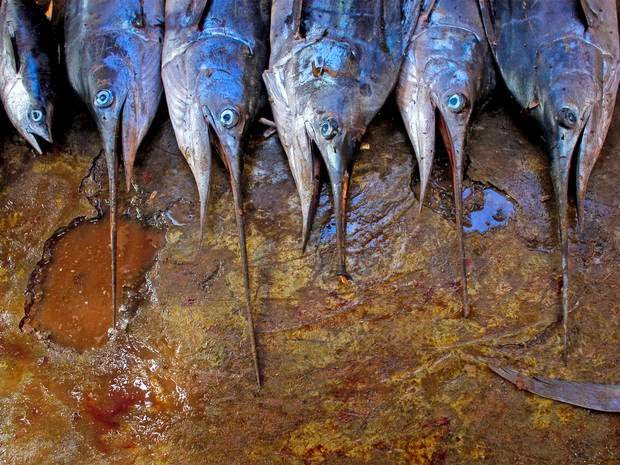1. Oceans Warmed More Than Previously Thought
Due to a lack of temperature data, scientists have potentially underestimated the extent of ocean warming around the world. Before a new global temperature measuring system called Argo was implemented in 2004, few measurements existed from the Southern Hemisphere, home to three-fifths of the world’s oceans. Researchers now believe that the amount of heat the oceans absorbed between 1970 and the mid-2000s may actually be 58% higher than previously thought. Read more…
———————————————–
2. The Shark You’ve Never Heard Of
Which shark is big as a great white, but as happy eating a rotting carcass as a live seal? The Greenland shark is the shark you’ve never heard of, but is thought to commonly exist in the dark depths of the world’s ocean. While its primary habitat is believed to be the Arctic Ocean, the species has thus far been spotted on the coasts of Canada, Portugal, Finland, Scotland, and Scandinavia. Read more…
———————————————–
3. Extinction of Ancient Predator Shaped Modern-Day Whales
A giant species of shark, known as Megalodon, went extinct around an estimated 2.6 million years ago. It was greater than today’s Great White, and believed to have fed on whales. Scientists are now identifying its extinction as the triggering event of the evolution of growing sizes in whales, leading to the enormous whales we see today. Read more…
———————————————–
4. Life’s Good For the Little Guys of the Ocean
As humans continue to overfish the seas, changes to the marine community are becoming ever more noticeable. As predatory species such as the swordfish, grouper, North Atlantic cod and salmon drop dramatically in number, the smaller fish in the sea are benefitting from this disturbance in the food chain. Smaller fish populations have increased, and as expected, those not popular with humans, such as sticklebacks and gobies, have experienced the highest increase. Read more…
———————————————–
5. Tidal Lagoon Project to Harness the Power of the Sea
Renewable energy from wind and solar is widely used around the world, but sea-based energy technologies are still in their infancy. A proposed project off the coast of Wales will use the movement of water in tidal lagoons to produce power. A similar, larger project proposed for the mouth of a nearby river was scrapped because of environmental concerns. Read more…
———————————————–
6. Divers Remove Tons of Trash from Protected Waters in Hawaii
During a month-long mission, a team of NOAA divers collected approximately 57 tons of marine debris, including derelict fishing nets and plastic litter, from the sensitive coral reefs and atolls of Papahanaumokuakea Marine National Monument in Hawaii. This World Heritage Site, which is one of the largest marine conservation areas in the world, is home to more than 7,000 marine species, such as endangered Hawaiian monk seals and green sea turtles. An estimated 52 tons of fishing gear alone accumulates in the monument every year. Read more…
Be sure to “LIKE” http://facebook.com/SeaSave to ensure our “Week in Review” is delivered to your newsfeed every Thursday.
Sea Save Foundation is committed to raising awareness of marine conservation. The Week in Review is a team effort produced by the Sea Save staff to provide a weekly summary of the latest in marine research, policy, and news.








